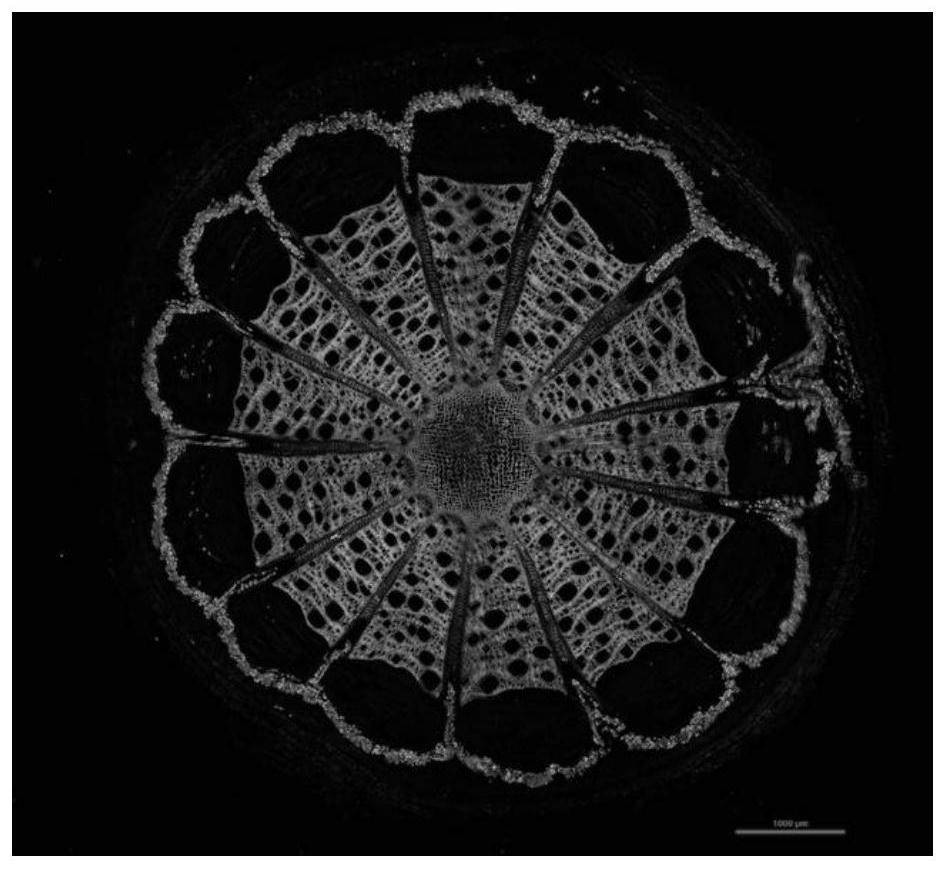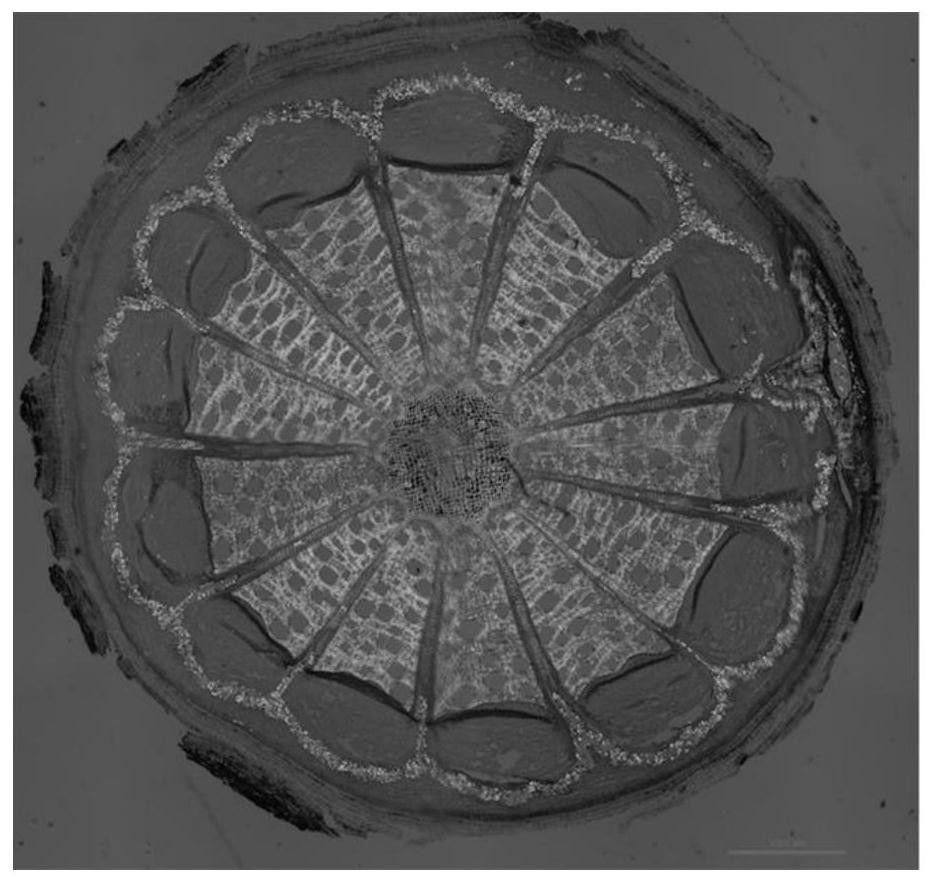Microscopic shooting method for joint development of single-refraction plant tissue and double-refraction plant tissue
A technology of plant tissue and birefringence, applied in microscopes, optics, instruments, etc., to achieve rapid resolution, easy popularization, and rapid inspection
- Summary
- Abstract
- Description
- Claims
- Application Information
AI Technical Summary
Problems solved by technology
Method used
Image
Examples
Embodiment 1
[0028] (1) Take the cane of Akebia chinensis, soften it, and make thin slices of 10-20 μm by freehand, slide-away sectioning or permanent paraffin embedding. Except for direct observation of permanent paraffin sections, select flat slices for other sections and put them on glass slides, add 1-2 drops of chloral hydrate test solution, heat permeabilization on an alcohol lamp, and then add 1-2 drops of dilute glycerin, Cover with a coverslip.
[0029] (2) Under a polarized light microscope, the cane of the said Bai Mutong is observed, and the polarizer and the analyzer are rotated 17° to the left or right from the orthogonal state, and the observation is made under a normal bright field. Microscopic features of monorefringent tissue and microscopic features of birefringent tissue under cross-polarized light.
[0030] (3) Using the large-scale image stitching technology of the digital imaging system and the real-time depth-of-field imaging technology to shoot the images under th...
Embodiment 2
[0035] (1) Take the cane of Akebia chinensis, soften it, and make thin slices of 10-20 μm by freehand, slide-away sectioning or permanent paraffin embedding. Except for direct observation of permanent paraffin sections, select flat slices for other sections and put them on glass slides, add 1-2 drops of chloral hydrate test solution, heat permeabilization on an alcohol lamp, and then add 1-2 drops of dilute glycerin, Cover with a coverslip.
[0036] (2) if Figure 5 As shown, place the microplate under a polarized light microscope, insert a λ plate optical path compensator in the slot of the middle lens barrel located at 45 degrees between the polarizer and the analyzer, Observing the microscopic characteristics of single refraction tissue under normal bright field and the microscopic characteristics of birefringence tissue under orthogonal polarized light under the condition of 90° orthogonal;
[0037] (3) Using the large-scale image stitching technology of the digital imag...
PUM
 Login to View More
Login to View More Abstract
Description
Claims
Application Information
 Login to View More
Login to View More - R&D
- Intellectual Property
- Life Sciences
- Materials
- Tech Scout
- Unparalleled Data Quality
- Higher Quality Content
- 60% Fewer Hallucinations
Browse by: Latest US Patents, China's latest patents, Technical Efficacy Thesaurus, Application Domain, Technology Topic, Popular Technical Reports.
© 2025 PatSnap. All rights reserved.Legal|Privacy policy|Modern Slavery Act Transparency Statement|Sitemap|About US| Contact US: help@patsnap.com



